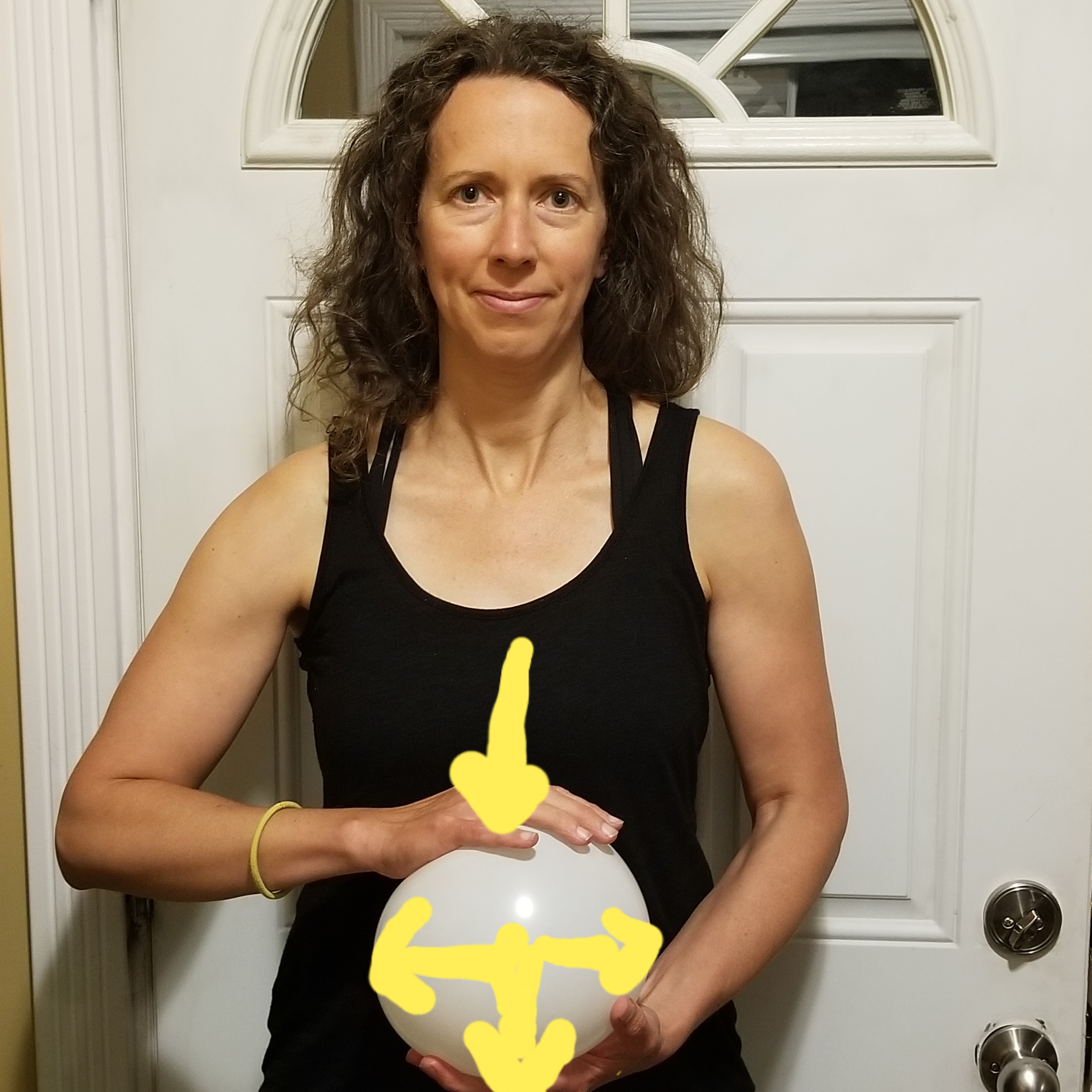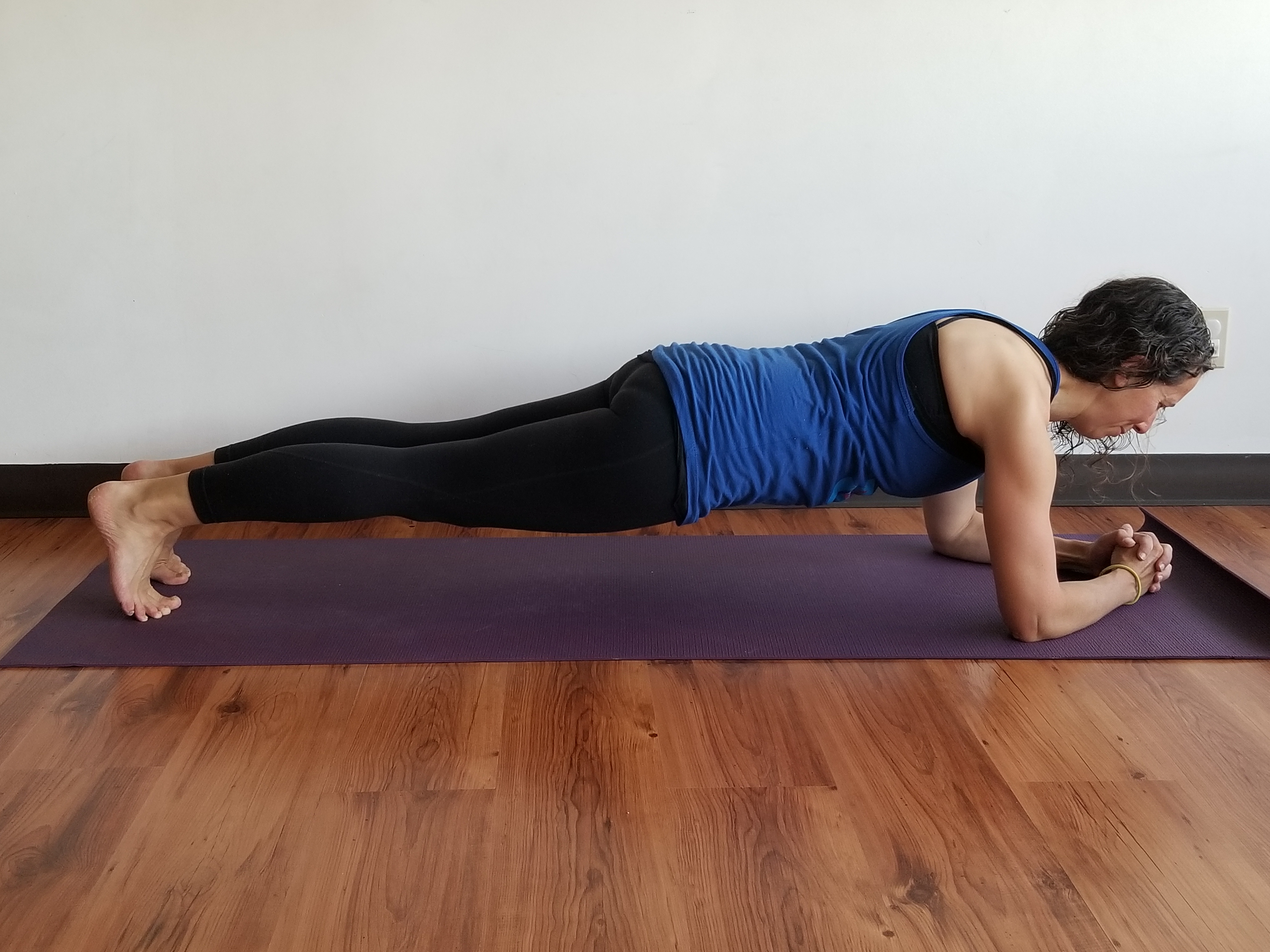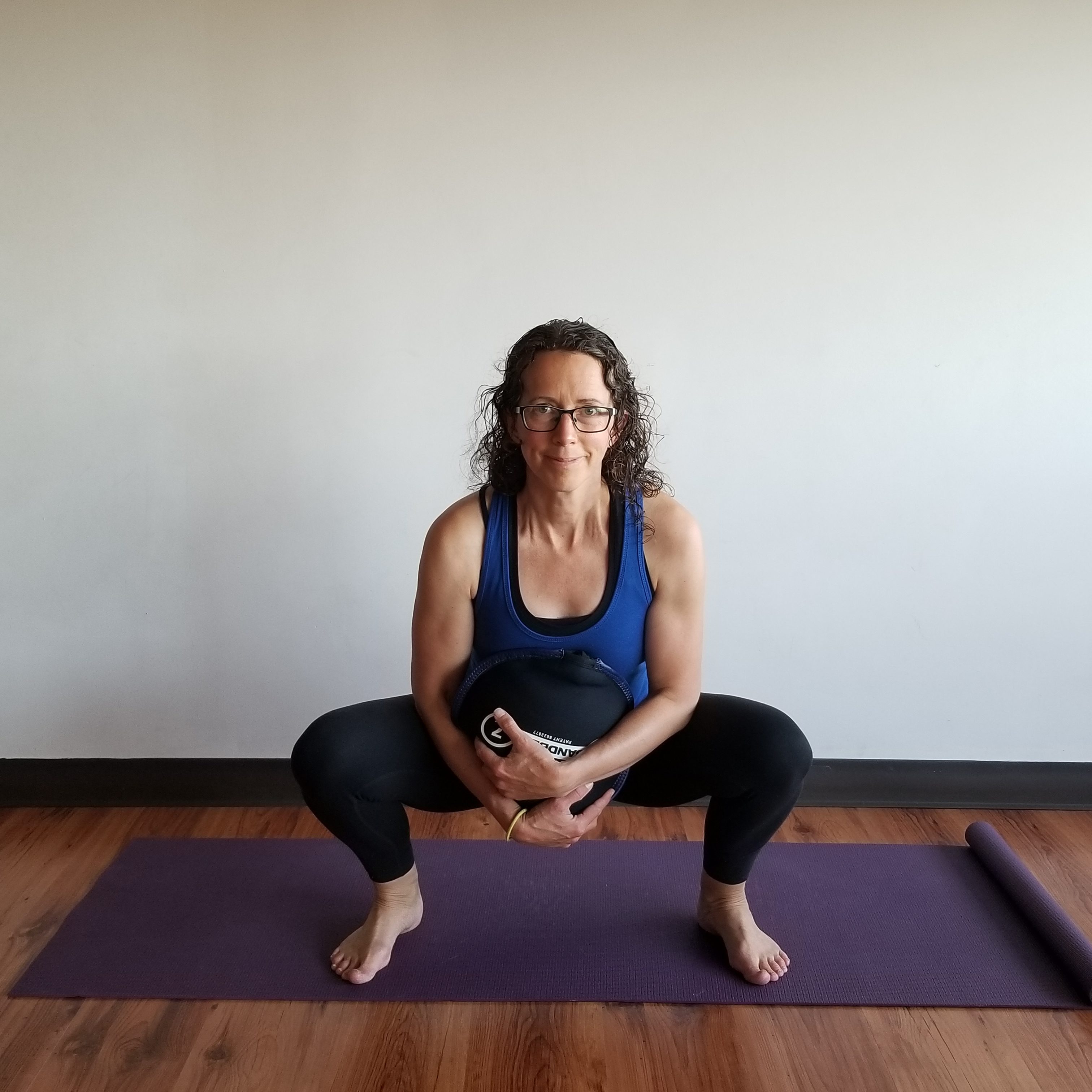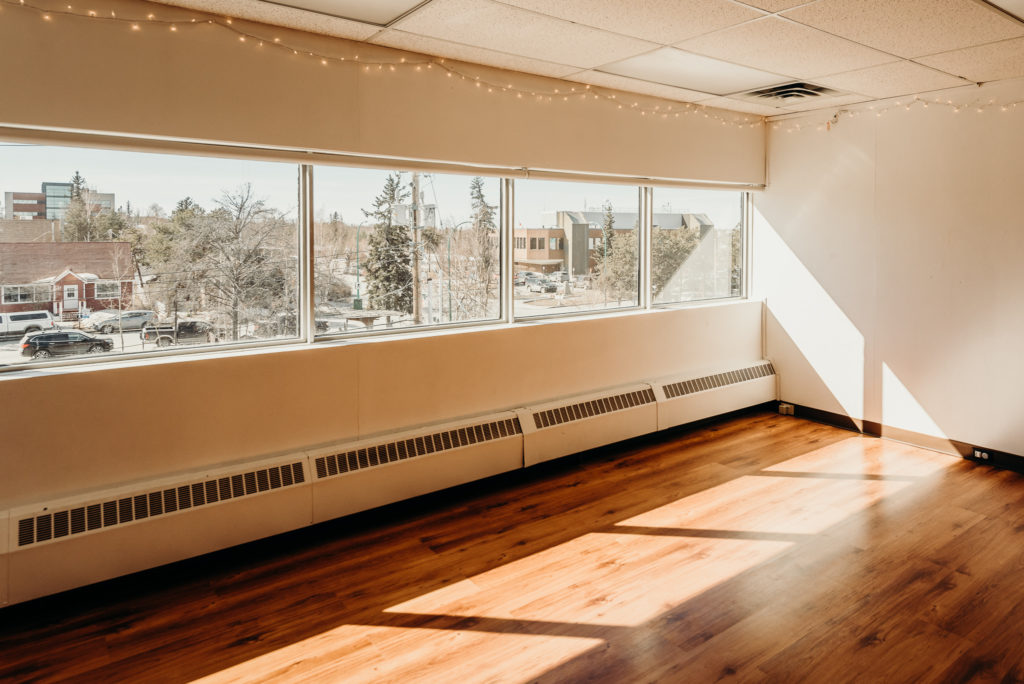I get a lot of questions from clients about how to strengthen the core. The questions I hear often come with deep confusion after clients have read a variety of contradicting junk views out there on the interwebs. AND despite the Myth of Core Stability being debunked as early as 2007, the number of yoga and fitness classes out there these days promising “hard abs” or a “strong core” to “protect the low back” or some other nonsense doesn’t seem to be on the decline. Is the fitness industry preying upon the common fears and concerns people have about how their lack of core strength is causing them back pain and all kinds of other harm or is it that those of us working in the yoga and fitness industry haven’t taken the time to educate ourselves about what “the core” actually refers to, how it works, and what it needs? That we don’t know better? I certainly used to try to plank my way to a stronger core as much as anyone. But I’ve improved my understanding and have moved on. Are you ready to move on? If you find core stability exercise uninspiring and something you simply put up with due to necessity then good news awaits you in this post!
Whether you’re someone out there wanting to improve your core strength or someone that teaches yoga, fitness or movement please read on to learn more.
WHAT DOES “THE CORE” EVEN MEAN?
When we hear the “core” word out in common language most of us think of our abdominal muscles. But the word “core” is poorly defined and doesn’t really have an agreed-upon definition. Adam Meakins, a Physiotherapist + Strength & Conditioning Coach referred to this lack of a definition in the IG post below by saying “the ‘core’ is anywhere between your nipples and knees, front, back, and sides.” What he’s getting at is that depending on who you talk to your core could mean:
- Your abdominal muscles (transverse abdominus, rectus abdominus, internal and external obliques)
- Your abdominal muscles + many posterior muscles (muscles on your back)
- Your abs (front) + back muscles (back) + diaphragm (top) and pelvic floor muscles (bottom)
- All muscles in c PLUS any other muscles they connect to via fascia (the web that connects all of our muscles) – at the very least we’re now adding all the muscles of the shoulder, upper back and hips to our definition of core.
- The definition in d to the extreme – all muscles in the body are connected so the core doesn’t have a beginning and an end, it is everything.
I tend to lean more towards the definition in d or e. In normal human movement, muscles don’t work in isolation. They co-contract. Even when you are doing an exercise to target a specific muscle or muscle group, it may target that group more than another muscle group but no muscle works in isolation.
So then, what does “core strength exercise” even mean? I like Adam Meakins post below.
BUT I THOUGHT I NEEDED STRONG ABS TO PROTECT MY BACK?
A couple of decades ago it was found that people with chronic low back pain had delayed transverse abdominis muscle activation(REF). The researchers did not make the leap to say that strengthening transverse abdominis would prevent or treat low back pain. But the fitness and therapy industries did. This was the start of the movement to “strengthen the core to protect the low back” and everything that came after. And by “the core” in this case, the transverse abdominis became the most important core muscle to strengthen, citing the research about it’s role in low back pain. Never mind that the original research didn’t refer to a strength deficit – it was reporting an activation “timing” issue. And the delayed timing was only a tiny fraction of a second, not consciously measurable or trainable.
Chronic low back pain is common and there is no evidence to support it being linked with a lack of core strength. What we are learning from pain science is that long-term pain is more about the nervous system and is multi-factoral and different for each person. But I’ll save that for a future post.
BUT I STILL WANT “HARD ABS” RIGHT?
I don’t know. Do you? Are your goals about function or aesthetics? There are loads of cultural views out there about what our abs should look like and these cultural views change over time (think Marilyn Monroe to now) and between cultures. AND these views are more intimately linked with our views about body fat since level of body fat will change the appearance of your abs regardless of the strength of your muscles. Translation: you can have strong abs and be fat at the same time AND you can have a more toned look to your abs because you have minimal body fat even if your abs aren’t as strong as someone who looks fatter than you. We have weird cultural beliefs about body fat not grounded in science but I’ll save that for another post too!
I think many people attempting to get a “strong core” are really concerned about the appearance of their body fat. Personally I care more about being strong and mobile than I do about body fat. But I make no judgements on your personal goals. If body fat is your concern please work with someone trained to help you with nutrition and diet and exercise for fat loss. A class focusing on core stability might not be what you need for these goals.
If by hard abs you’re referring to that cue we’ve all heard to keep our abs (especially TvA – Transverse Abdominis) constantly engaged to stabilize the spine, here are a few things to consider:
- Your breath moves your core/trunk.
- Your trunk (aka “core”) muscles are reflexive and respond to load demands.
- Trunk muscle activation required for spinal stabilisation during normal movement is not very much and is below conscious levels of activation.
- Conscious activation of trunk muscles is more than the low level required for stabilisation.
Breathing – when we are not sucking in our gut or otherwise engaging “our core” (whatever that means) our diaphragm (big breathing muscle under your rib cage) contracts and moves down when we inhale and relaxes and domes back under the rib cage when we exhale. In response to this movement of the diaphragm, there is a pressure change in our abdominal and pelvic regions. Think of your trunk like a balloon (you’re not filled with air but just to understand the pressure thing). Now if something exerted pressure on the top of that balloon can you see how the rest of the balloon would be displaced or expand outward? When you breathe in your diaphragm exerts downward pressure and in response everything in your trunk below your diaphragm expands in 360 degrees around and also down at the bottom (your pelvic floor muscles). If you’re sucking your tummy in or contracting your abdominal muscles beyond the level required for the load demands of the activity you are doing you are interfering with this natural rhythm of the breath, a rhythm that works in conjunction with all the muscles in your trunk, helps keep your pelvic floor muscles healthy and strong, and is linked with a whole bunch of other cool stuff going on in your body!

Trunk Muscle Activation & Load Demands – it has been measured that the amount of trunk muscle activation required to stabilize the spine for normal standing, walking and breathing is between 1-5% maximum voluntary contraction (MVC) depending on the muscle group (REF). This is such a low level of activation that it is below our conscious control. Consciously recruiting your abdominals is automatically much greater than 1-5% of your MVC so to say that we need to engage our core to protect our spine is just silly. These muscles naturally respond to load demands – when you go to lift something heavy into your car or push open a heavy door, these muscles naturally increase their level of engagement without you having to think about it. I’ll put a disclaimer on this one in that if you are lifting really heavy at the gym you may need to learn how to work with your breath and trunk muscles in a different way….BUT your abdominal muscles are still going to work in conjunction with all of your other muscles and not in isolation.
Putting this together – constantly consciously engaging, contracting or sucking in your abdominals is not required to protect your low back AND may be interfering with your breathing mechanics and pelvic floor function. For breathing and natural, reflexive core function I want soft abs not hard ones. Most of us could benefit from releasing that constant tummy sucking. When I teach pelvic floor and core classes for people experiencing pelvic floor weakness I am not teaching traditional core strength and stability exercises. I’m teaching about breath, tension release, pelvic floor awareness and adding this to movement. I’ll leave it at that.
OK BUT CAN I STILL DO PLANKS IF I WANT TO STRENGTHEN MY CORE? AND WHEN I’M DOING THEM I SHOULD HUG MY NAVEL TO SPINE RIGHT?
If you’re trying to strengthen your abdominal muscles, those isometric (keeping your body still) “core stabilisation” exercises like planks or various exercises from hands and knees position might help develop body awareness skills but they aren’t actually “strengthening” your abdominal muscles as the level of activation measured is too low to see actual strength gains. (REF, REF).

Does anyone actually like this exercise? I can think of a million things I’d rather be doing with my time.
Please refer to Adam Meakins’ post above. “If you train legs, shoulders, back, and chest regularly you’re probably doing enough ‘core’ exercise.” Moving your body in different ways and with varying degrees of load challenges your trunk muscles naturally and dynamically. Do you need to do abdominal strengthening exercises or do you just need to move more often and in more diverse ways and add loading?

As for hugging navel to spine, do I need to address this one after stating all of the above? What is this cue even talking about? Why is it still out there? What am I supposed to be activating or engaging when I’m asked to do this? Am I sucking in and rounding my spine or am I trying to keep my spine still? Am I holding my breath, inhaling, exhaling? Am I trying to engage my transverse abdominis and, if so, why am I giving it this sole focus when it works will all of my other trunk muscles? Can you see how this cue can be confusing and may be resulting in several different things in different people? Do we need to cue anything other than “are you still breathing in and out during this exercise?”
IN SUMMARY
There is no “core” OR there is a core and it is all of your muscles working together in every movement all the time.
Engaging or strengthening your core or your abdominal muscles isn’t required to protect your low back, prevent back pain or injury or to stabilize your spine.
Chronic low back pain is better understood through the lens of pain science (not a topic of this blog).
Your TvA (Transverse Abdominis) works in conjunction with all your other muscles. Our muscles co-contract and don’t work in isolation.
Wanting hard, toned or washboard abs is a cultural thing, personal preference for an aesthetic and isn’t a direct measure of abdominal strength since it has a lot to do with percentage body fat.
Constantly sucking in, engaging or activating your abdominal muscles can interfere with the normal rhythm of your breath, intra-abdominal pressure, and pelvic floor health.
Your trunk muscles respond reflexively (without you thinking about it) to load demands. They are on 1-5% of maximum voluntary contraction during normal activity and walking and turn more on when you lift something heavy without you thinking about it (except at the gym lifting really heavy, then you may need to think about it).
Traditional isometric “core stability” exercises like planks don’t actually strengthen the core (they are too low load). If you want to “strengthen the core” move in more diverse and dynamic ways and lift heavy things.
Stop cueing or practicing hugging your navel to your spine. This is a remnant junk cue still in circulation due to all the other “core strength” misunderstandings.
Just breathe, move and add load. Your core strength will be there for you.
If you are looking for yoga classes that integrate an understanding of exercise science and cue normal breathing that works with core function and load demands please check out my online class membership. Specific Pelvic Health Yoga Therapy classes will be returning soon (separate from the membership).
Thanks for reading.



